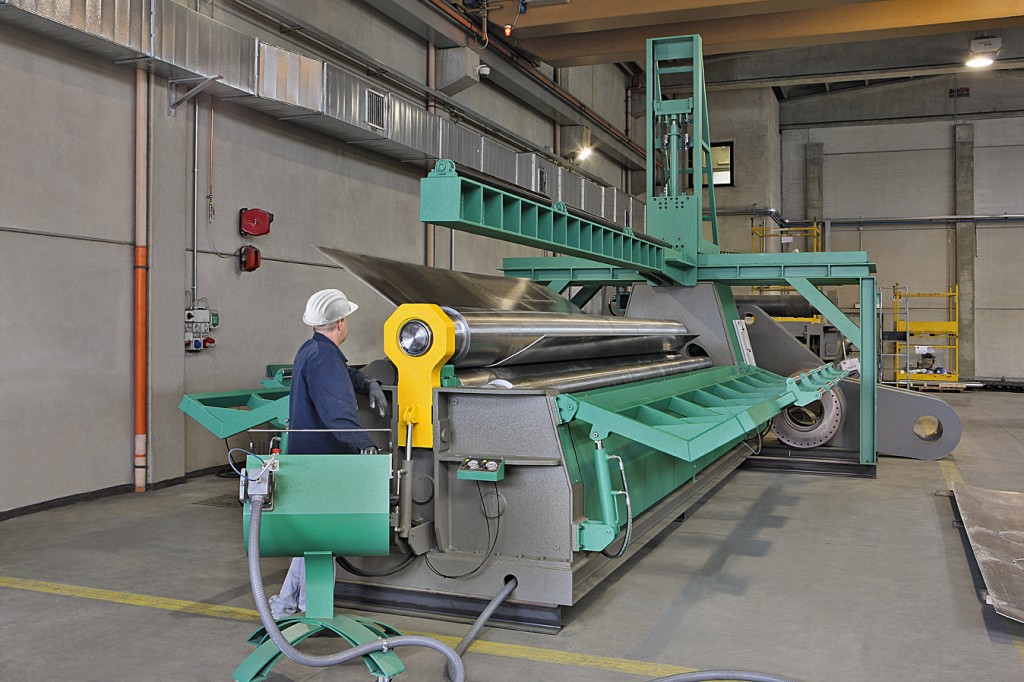Manufacturing unexpectedly expanded in September after three months of contraction, reflecting stronger orders that ease concern the U.S. economy will slow further.

Click image above: Oct. 1 (Bloomberg) — Bloomberg’s Erik Schatzker reports that the Institute for Supply Management’s U.S. factory index rose to 51.5 in September from 49.6 a month earlier. The dividing line between expansion and contraction is 50. He speaks on Bloomberg Television’s “Market Makers.”
The Institute for Supply Management’s factory index rose to 51.5 last month from 49.6 in August, the Tempe, Arizona-based group said today. Readings above 50 show expansion, and the September measure exceeded the most optimistic forecast in a Bloomberg survey.
Stocks extended gains after the figures showed American factories are holding up in contrast to their counterparts inEurope and Asia. Sustained strength in motor vehicle sales and a rebound in demand for home construction materials are helping cushion manufacturers from weaker exports and cutbacks in business investment.
“Housing is definitely supporting,” said Michael Feroli, chief U.S. economist at JPMorgan Chase & Co. in New York. “The economy still seems to be expanding, even if modestly, and that should keep overall manufacturing growing.” Still, “it’s hard to see things materially accelerating from here.”
The median forecast in the Bloomberg survey was 49.7, andestimates from the 76 economists surveyed ranged from 48 to 51.2. A reading above 42.6 generally indicates an expansion in the overall economy, the ISM said. The gauge averaged 55.2 in 2011 and 57.3 a year earlier.
Construction Spending
Homebuilding outlays climbed 0.9 percent in August, a report from the Commerce Department showed today. A drop in non- residential projects pushed down overall construction spendingby 0.6 percent, the most since July 2011.
Federal Reserve Chairman Ben S. Bernanke today renewed a pledge to sustain record stimulus even after the U.S. expansion gains strength, while saying policy makers don’t expect the economy to remain weak through 2015.
“We expect that a highly accommodative stance of monetary policy will remain appropriate for a considerable time after the economy strengthens,” Bernanke said in a speech in Indianapolis. Policy makers’ forecast to hold the main interest rate near zero until at least mid-2015 “doesn’t mean that we expect the economy to be weak through” that year.
The Standard & Poor’s 500 Index climbed 0.3 percent to 1,444.49 at the close in New York. Treasuries were little changed with the yield on the benchmark 10-year note at 1.62 percent compared to 1.63 late on Sept. 28.
Orders, Employment
The ISM’s new orders measure rose to a four-month high of 52.3 from 47.1. The employment index advanced to 54.7 from an almost three-year low of 51.6 the prior month. The gain from August was the biggest since October 2009. The group’s measures of production, export demand, prices paid and order backlogs also climbed in September.
A pickup in new-home construction and stronger auto sales are sources of strength for manufacturing. Housing starts increased in August, reflecting the strongest pace of single- family projects in more than two years, Commerce Department figures showed Sept. 19.
Autos in August sold at a 14.46 million annual rate, the fastest since the surge in August 2009 tied to the government’s “cash-for-clunkers” program. They were up from a 14.05 million pace in July, according to data from Ward’s Automotive Group.
The ISM figures compare with others showing weakness worldwide. In the euro-area, manufacturing contracted for a 14th month in September, suggesting the economy may have struggled to avoid a recession in the third quarter. A gauge of the industry in the 17-nation currency region based on a survey of purchasing managers was 46.1, Markit Economics said today. The index has held for 14 months below 50, indicating contraction, and fell as low as 44 in July.
U.K. Manufacturing
U.K. factories shrank more than economists forecast and export orders declined for a sixth month. A measure based on a survey of purchasing managers fell to 48.4 from 49.6 in August, Markit Economics and the Chartered Institute of Purchasing and Supply said in London today.
In China, manufacturing contracted for an 11th straight month, increasing pressure on the government to bolster growth in the world’s second-largest economy. The purchasing managers’ index from HSBC Holdings Plc and Markit Economics was at 47.9 last month, compared with 47.6 in August. Export orders declined at the fastest pace in 42 months and factory purchasing activity fell for a fifth consecutive month, the Sept. 29 report showed.
‘Surprisingly Good’
“Manufacturing in the U.S. looks surprisingly good against a backdrop of weak performance in China and the euro area and the looming fiscal cliff,” said Dirk Chlench, head of bond research at Landesbank Baden-Wuerttemberg in Stuttgart, Germany, who had the highest ISM projection, 51.2, in the Bloomberg survey.
Still, some companies, like steel-processor Worthington Industries Inc. (WOR), are tempering their outlook.
“We don’t have a great deal of clarity on where the economy is going,” John McConnell, the Columbus, Ohio-based company’s chairman and chief executive officer, said on a Sept. 27 earnings call. “We’re also not saying that everything’s horrible out there. We’re saying we have some reason to be cautious.”
Caterpillar Inc. (CAT), the world’s biggest construction and mining equipment maker, last week cut its forecast for 2015 earnings after commodity producers reduced capital expenditures. While a global recession remains possible, Caterpillar is forecasting moderate and “anemic” growth through 2015, Chairman and Chief Executive Officer Doug Oberhelman said in a presentation to analysts on Sept. 24.
Europe’s Economy
“We are in no way thinking we’re going to see a recession in 2013,” Oberhelman said. “Europe’s in recession today, probably going be a while to dig out.”
To boost growth and stimulate more hiring that may provide a spark for the economy, the Fed last month said it would keep its target interest rate close to zero until at least mid-2015 and began a third round of stimulus, buying $40 billion in mortgage bonds a month.
“If the outlook for the labor market does not improve substantially, the committee will continue its purchases of agency mortgage-backed securities, undertake additional asset purchases and employ its other policy tools as appropriate,” the Federal Open Market Committee said Sept. 13 in a statement at the end of a two-day meeting in Washington.
To contact the reporter on this story: Michelle Jamrisko in Washington atmjamrisko@bloomberg.net
To contact the editor responsible for this story: Christopher Wellisz at cwellisz@bloomberg.net





 We generated more quality leads in Las Vegas than in the last year’s Fabtech Show in Chicago show where the quantity of leads ended up surpassing the quality. This year in Las Vegas we did not have many “tire-kickers” visit our booth but customers that were seriously looking to purchase machines. Discussions were lively and productive.
We generated more quality leads in Las Vegas than in the last year’s Fabtech Show in Chicago show where the quantity of leads ended up surpassing the quality. This year in Las Vegas we did not have many “tire-kickers” visit our booth but customers that were seriously looking to purchase machines. Discussions were lively and productive.















